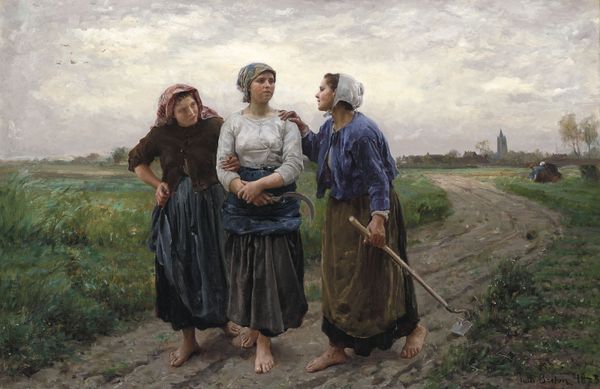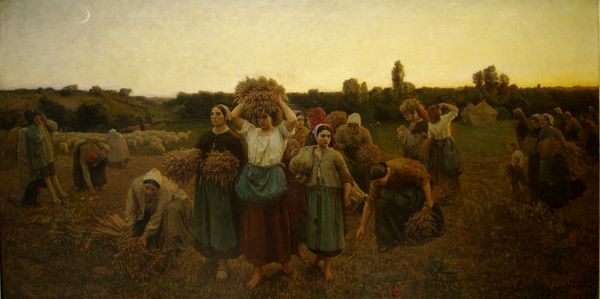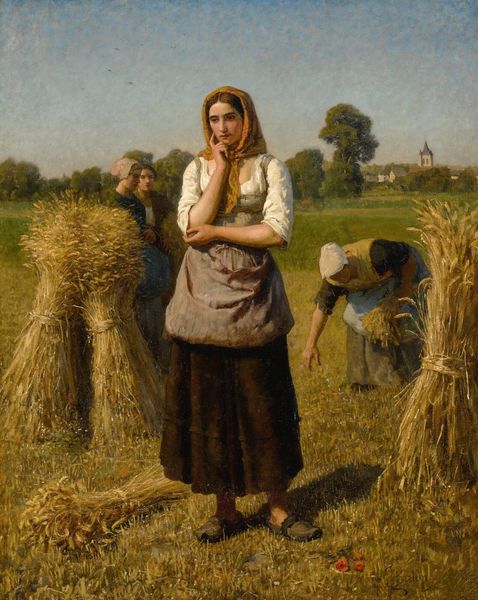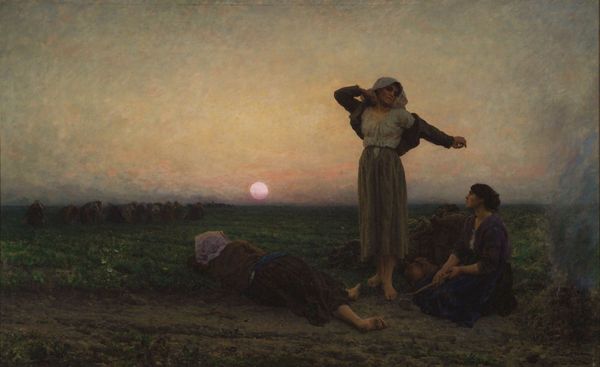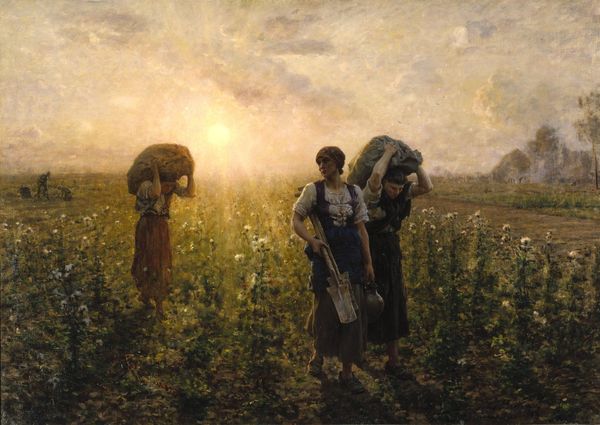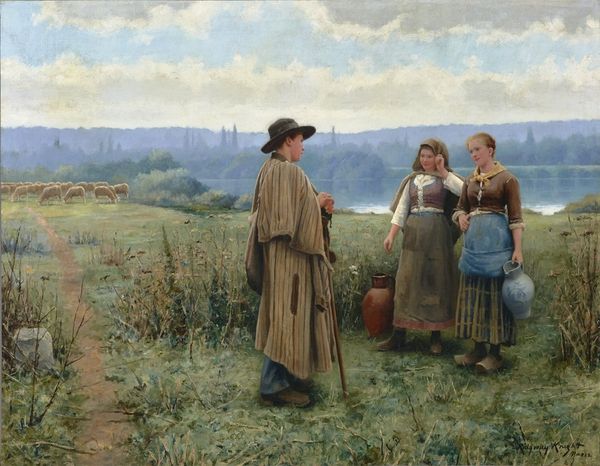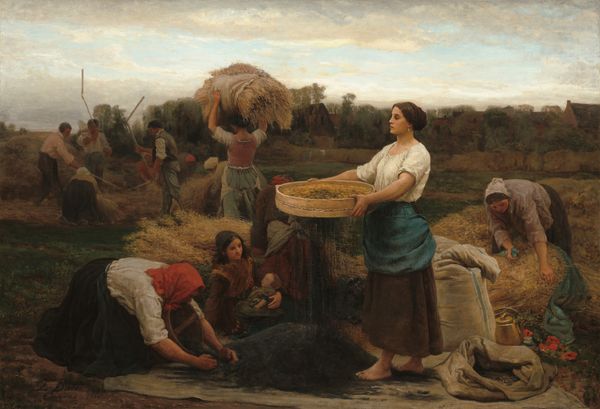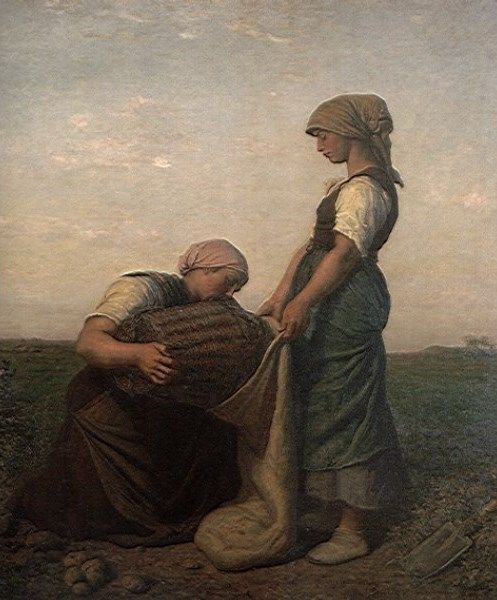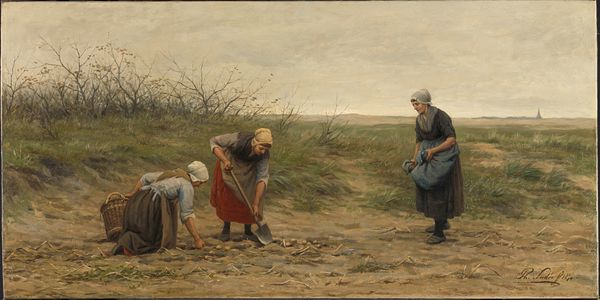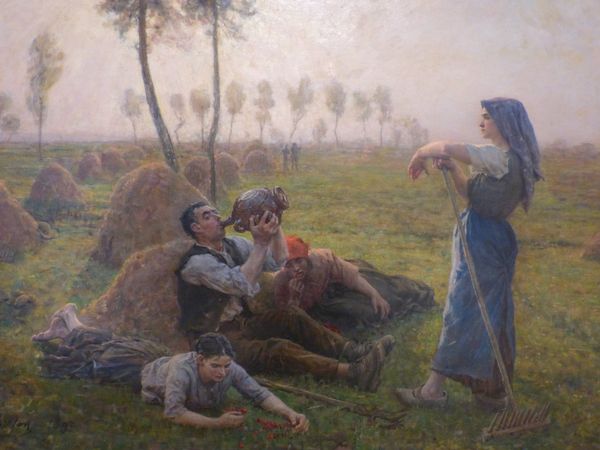
painting, plein-air, oil-paint
#
portrait
#
gouache
#
painting
#
plein-air
#
oil-paint
#
landscape
#
genre-painting
#
history-painting
#
academic-art
#
realism
Copyright: Public domain
Editor: Here we have Jules Breton's "Returning from the Fields," painted in 1871 using oil on canvas. The scene depicts three peasant women walking together, their figures dominating the landscape. It's beautifully composed, but there’s also something very serious and weighty about their postures that seems at odds with the idealized pastoral scene. How do you interpret this work? Curator: It's crucial to understand Breton's artistic positioning. As a painter deeply entrenched in Realism, he sought to portray the lives of rural workers with accuracy and dignity, which, while laudable, can also run the risk of romanticizing labor. Do you notice anything about their bare feet and modest clothing? Editor: Well, their bare feet definitely reinforce the idea of them being directly connected to the land, a classic symbol of rural life. Their clothing seems functional but simple, suggesting a lack of material wealth. Curator: Exactly. Now, let's consider the context of 1871, shortly after the Franco-Prussian War. There’s an air of solemnity about these women. Perhaps they represent the resilience and endurance of the French peasantry amidst national trauma and displacement. What’s really striking is the intimacy he tries to convey – the bond between women workers is a constant source of power during conflict. The wheat field is a powerful sign of their labor as central to the national recovery, particularly during this time. Do you notice any visual cues? Editor: You're right. There's a sense of camaraderie as they're holding each other. And now that you mention it, their physical strength does convey power, especially against the backdrop of devastation, though one must remember his privileged position observing this life from afar. Curator: Yes. Considering his potential to exoticize them for an urban elite, we can also think about the agency of these women at that historical conjuncture. Ultimately, examining his background enables us to see this painting as a layered commentary on labor, identity, and nationhood in post-war France, prompting us to examine our own expectations of rural life, versus lived experiences. Editor: I learned a lot today, seeing how Breton depicted working-class women against the backdrop of a historical event. Thanks! Curator: Me too, thinking more deeply about their significance allows for much greater engagement with the canvas.
Comments
No comments
Be the first to comment and join the conversation on the ultimate creative platform.
